 A Quick Look
A Quick Look
As mentioned on the Home page, Musa is featural - the shapes represent phonetic features - and iconic : letters look like their sounds. A nose looks like a triangle, with the point pointing upwards, so the Musa letters for nasal sounds - sounds made with your nose - all have triangles on top. The triangle faces left when connected to a stem, but is centered when unconnected.
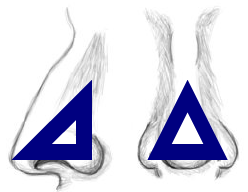
The bottom of the letter indicates whether the sound is made with the lips (to the left in profile), the teeth (center) or further back in your throat (right):
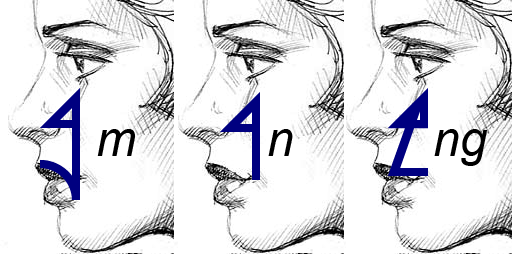
The corresponding voiced stops just omit the triangle:
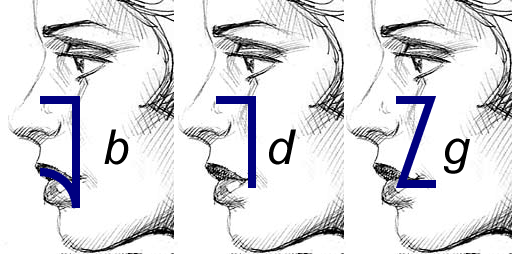
Unvoiced stops feature a sharper top, like a roof sloping down to the right:
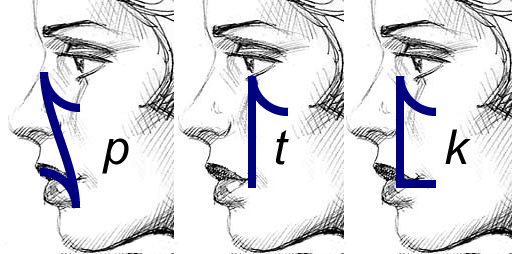
Aspirated stops, like those we have in English at the beginning of a stressed syllable, have a chimney on top of the roof:
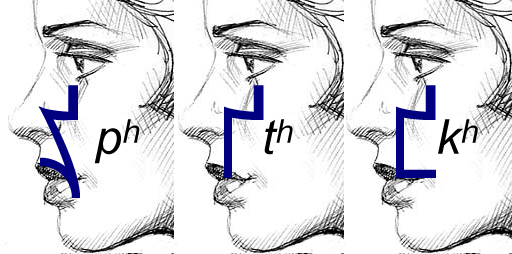
Held or unreleased stops, like those we have in English at the end of a syllable, have an underhanging soffet under the roof:
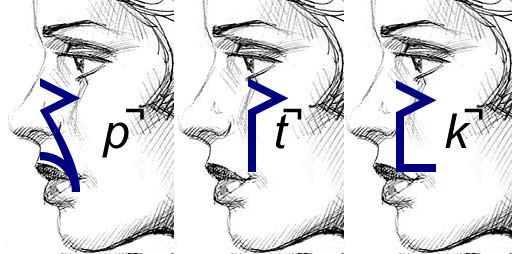
The entire alphabet is built up like this, so that the shape of each letter indicates its sound.
The basic principle of Musa, and one of its biggest advantages over the Roman alphabet, is that each sound has its own letter, and every letter corresponds to one and only one sound. For example, consider the English word thing, which is written in Musa as

Although it's spelled with five letters in the Roman alphabet, it needs only three letters in Musa. The Musa spellings also make clear that thing isn't thin with an extra g sound added, that think has a "hidden" ng sound, that this starts with a different sound (which I'll transcribe as dh), and that shin and chin also begin with single sounds, even though they're written with two Roman letters :

You may also have noticed that Musa th·s·sh share the same top, as do n·ng, and that several letters share the same bottoms. As you learn Musa, you'll notice more and more of those patterns, and they make it much easier to learn.
The principle of one letter = one sound is especially helpful with English vowels, since there are a lot of them, while the Roman alphabet offers only 6 letters to write them with. So the vowels in lot long look lone lose are all written with different Musa letters.

Musa offers another advantage for English: stressed vowels are written high, so you can read the difference between the noun project and the verb project.

For most languages, Musa is a better script than the current one. Musa is easier for children to learn, easier for adults to read and write, and easier for foreigners to pronounce, even if they don't speak the language. How many Americans pronounce the x in México like the x in Texas, while Mexicans pronounce it as a raspy h like the j in hijo?
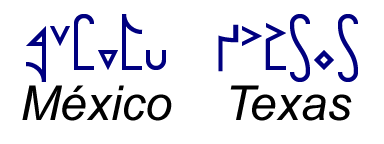
Now that you get the idea, we offer you three choices for how to continue.
| If you'd like to keep reading about Musa: how it works and how it handles all the sounds in all the world's languages, then continue reading about the Principles behind Musa, and then I'll present the script in detail over the following dozen pages. We'll use some technical vocabulary, but we'll explain it as we do. | Principles |
|---|---|
| If you'd rather just learn Musa for English, we offer you a set of lessons: | Lessons |
| Finally, if you'd like to try using Musa, you'll find the tools on this page: |
| © 2002-2025 The Musa Academy | musa@musa.bet | 13sep23 |